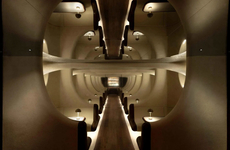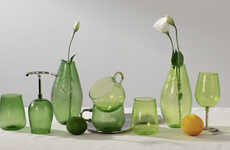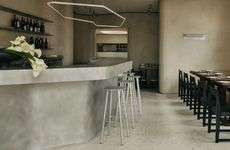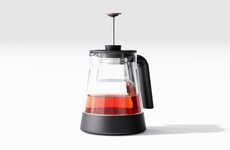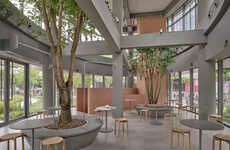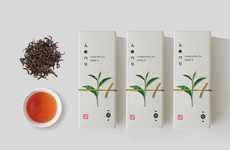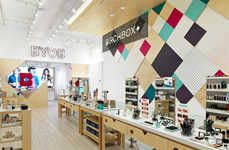
The Rabbit Hole is a Whimsical Organic Tea Bar in Australia
Rebecca Byers — January 14, 2016 — Lifestyle
References: retaildesignblog.net
This quaint teahouse concept is a stunning example of the design language associated with the Japanese art of Kintsugi, a "celebration of the beauty of imperfection in ceramic objects and which means to join with gold." The Rabbit Hole Organic Tea Bar is located in Redfern, Australia and challenges convention by reinventing the teahouse experience.
The light, airy space is characterized by its floor-to-ceiling windows that allow an expanse of natural lighting that, in combination with the white walls, opens up the room entirely. There is also a specialty tea display that is a custom installation comprised of Kintsugi bowls sitting atop oak timbers.
The Rabbit Hole was realized by Matt Woods Design, who succeeded in translating a traditional art form into a dynamic, inviting space.
The light, airy space is characterized by its floor-to-ceiling windows that allow an expanse of natural lighting that, in combination with the white walls, opens up the room entirely. There is also a specialty tea display that is a custom installation comprised of Kintsugi bowls sitting atop oak timbers.
The Rabbit Hole was realized by Matt Woods Design, who succeeded in translating a traditional art form into a dynamic, inviting space.
Trend Themes
1. Kintsugi-inspired Design - Create products or spaces that celebrate imperfections and use gold to join broken parts, inspired by the Japanese art of Kintsugi.
2. Sustainable Tea Experiences - Develop innovative concepts for tea bars or teahouses that prioritize organic, sustainable, and ethically sourced tea products.
3. Minimalist and Light-filled Spaces - Design spaces with floor-to-ceiling windows and white walls to create open, airy atmospheres filled with natural lighting.
Industry Implications
1. Interior Design - Explore new opportunities to incorporate Kintsugi-inspired elements into interior design projects, such as custom installations or furniture design.
2. Tea Industry - Transform the tea experience by creating sustainable tea bars or teahouses that offer unique, organic tea products in inviting and aesthetically pleasing spaces.
3. Architecture - Incorporate minimalist design principles and floor-to-ceiling windows into architectural projects to create light-filled and open spaces that promote a sense of calm.
3.3
Score
Popularity
Activity
Freshness



